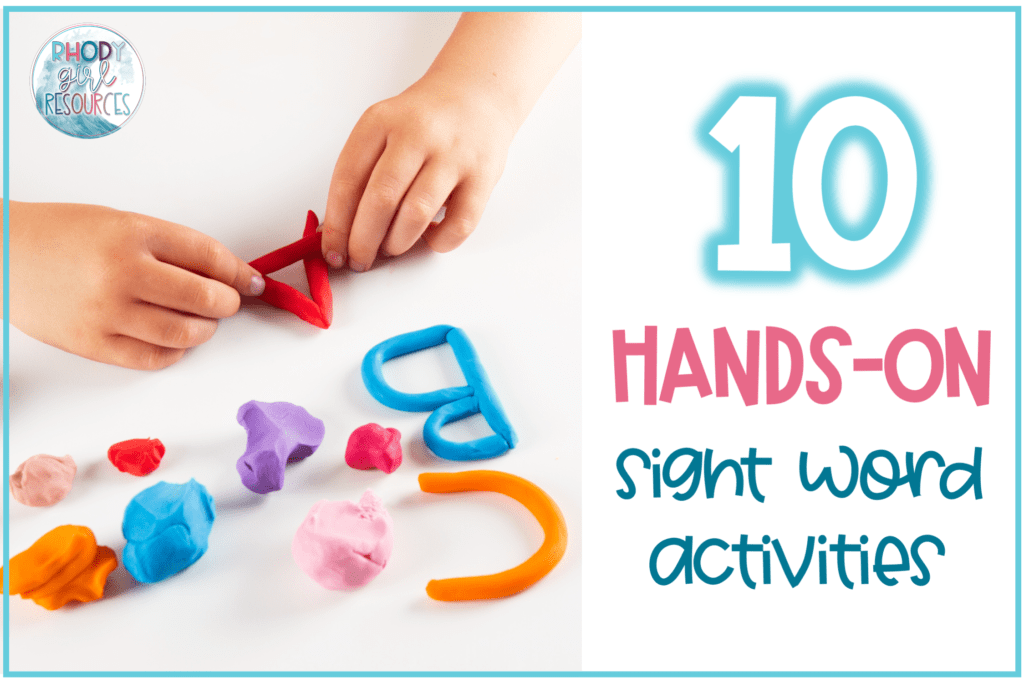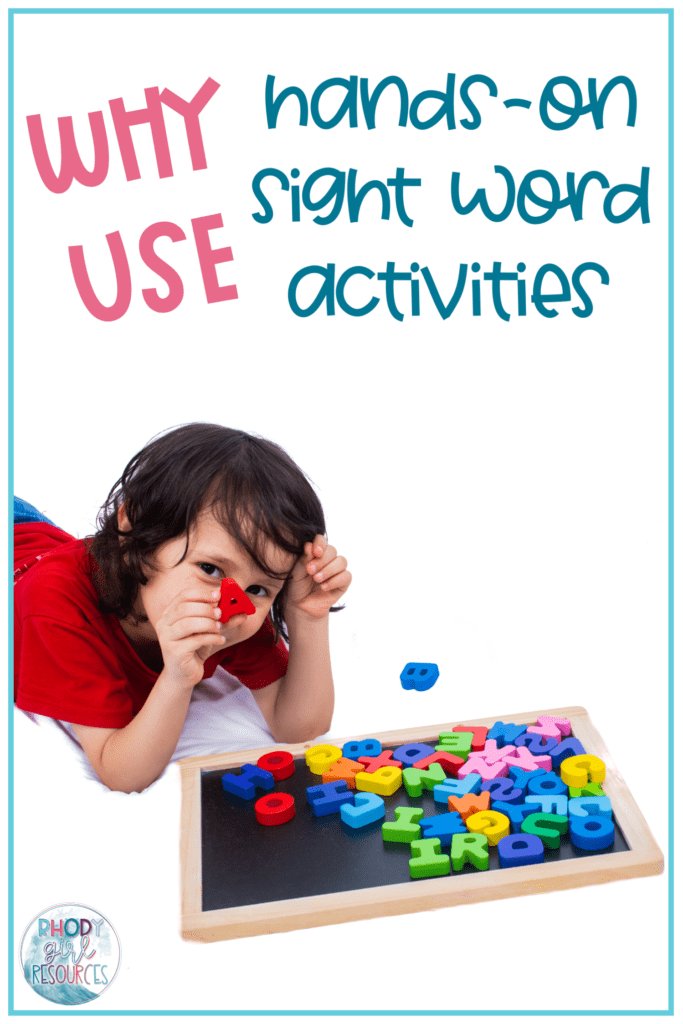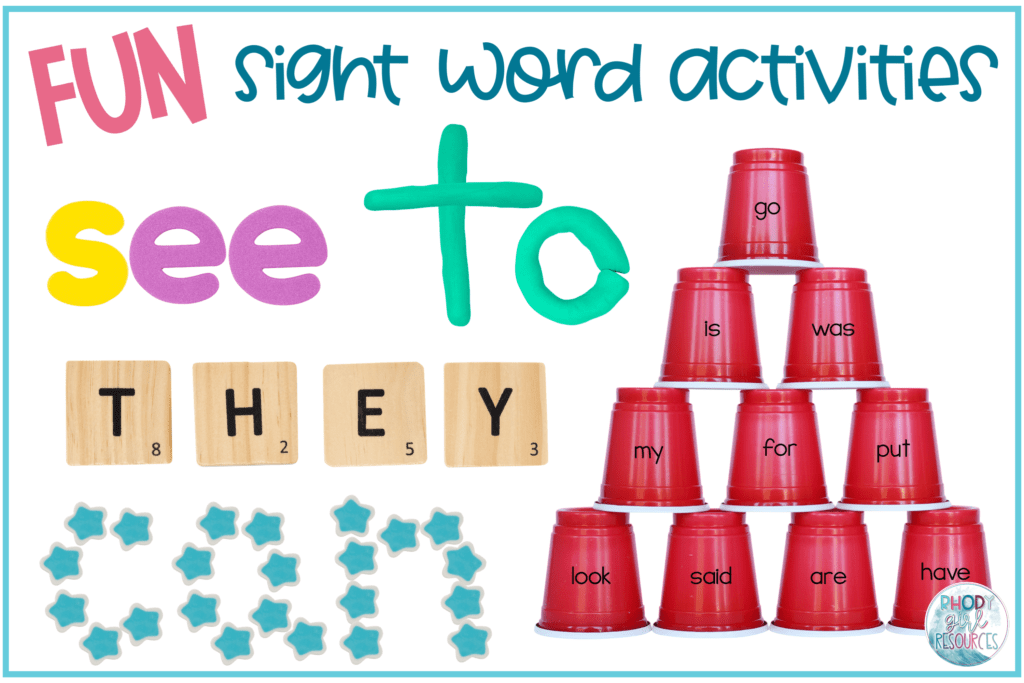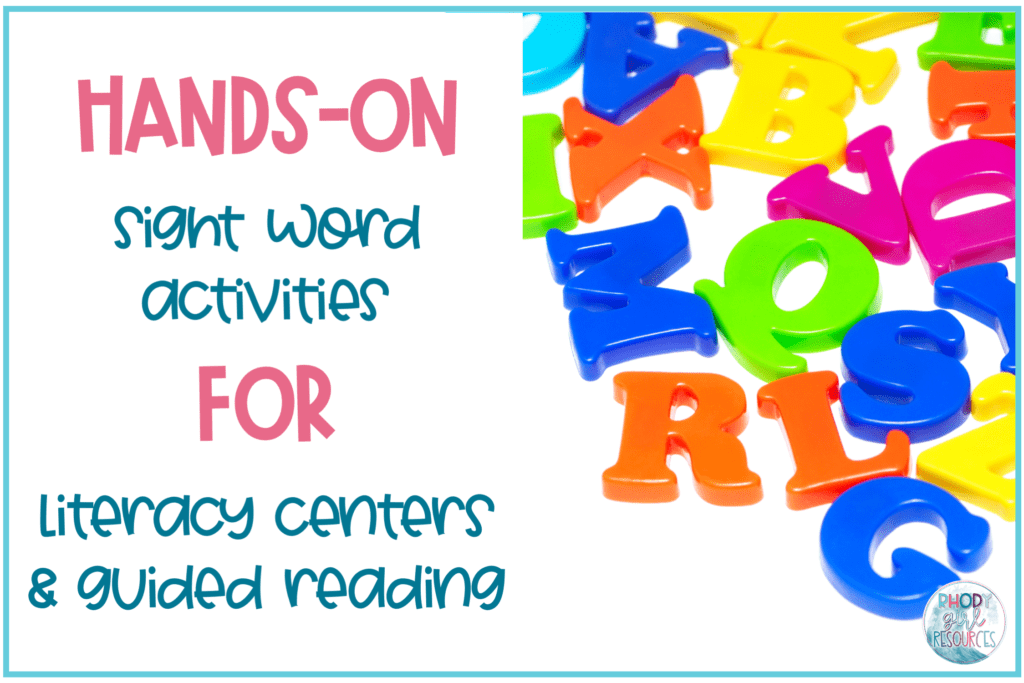In the classroom, it is clear that kids love to play. So anyway, you can make learning fun is a plus. Often, with hands-on learning activities, kids think they’re are playing instead of learning. These hands-on sight word activities will have your students begging to use them.

What is Hands-on Learning?
Students learn in a variety of ways. Hands-on learning is interactive, and it gets learners involved. Students do not just sit and listen. Nor do they complete worksheets. Instead, hands-on learning gives students time to practice and engages them in active learning. With hands-on learning, they learn by doing.

Benefits of Hands-on Sight Word Activities
- More engaging way to learn
- Can lead to increased retention
- Result in a physical product
- They allow students to be creative
- Build fine motor skills
What are Some Hands-on Sight Word Activities?
In the classroom, students need to take high-frequency words and make them into sight words. Yes, there is a difference between sights words vs. high-frequency words. This transfer requires exposure and practice. Sight word practice is easy, but how to make sight words fun is the real question. Here are 10 hands-on sight word activities to try.
1. Shaving Cream
Shaving cream is messy but fun. Grab a can and spray it on the tables or desks. Let students spread it out and write. This tactile experience lets them practice high-frequency words and cleans the tables!
2. Stamps
Use stamps to spell high-frequency words. There are many types of stamps and ink to keep this activity new and engaging. Give students word cards, and this is an easy and independent activity.
3. Building Materials
There are so many different materials students can build with. Most of these items are already in a classroom! Popsicle sticks, pattern blocks, pom poms, and building blocks are perfect for making words.
4. Games
Games are great for high-frequency word activities. What’s great is you can turn common games into high-frequency word games. For example, take Jenga and add sight words to the blocks. Write a sight word instead of an X or an O when playing Tic-Tac-Toe. Write a sight word on each cup. Students will read the word before stacking it. Keep going and see how high you can build a tower! Even better, get out those wiggles with Movement Games: Pre-Primer or Movement Games: Primer.
5. Sand & Salt
Grab some sand from the beach or salt at the store. Use a tray or a small bin to hold the sand or salt. Students will use their fingers or a fun tool to write their high-frequency words.

6. Magnets
All you need is the side of a filing cabinet or a Dollar Store cookie sheet and some magnet letters. Use the magnet letters to spell the sight words. Then, after read them to a friend or the teacher.
7. Sensory
Make. a sensory bin with rice, beans, shredded paper, or pasta. Hide letters or word cards for students to find. If they find a word, they can practice reading it. They can also collect the letters and use them to build and spell sight words. You can add your own words to these editable sensory activities for kindergarten.
8. Letter Tiles
Take the letter tiles from Scrabble or Bananagrams. You can also make your own letter tiles using rocks, wooden pieces, and more! Students will then use the letter tiles in a high-frequency word activity to build and spell their words.
9. Erasers & Manipulatives
Dollar Spot erasers, large Perler beads, or beans are just a few items that would work to make letters with. Place the different items in bowls or a tray and let your students’ creativity shine.
10. Play Dough
Build fine motor skills using playdough as a high-frequency word activity. Make the playdough with your students before using it to add even more interest! Students can roll snakes or balls to build the letters in their sight words. Add dough stampers, and you have a whole new twist to play dough.
When Can You Use Hands-on Sight Word Activities?
Students can use these fun sight word activities anytime. Start your day off by having them available at arrival. These are great instead of morning work to ease your students into their day. Guided reading would be a great time to use sight word activities with support. Once students have built independence, these hands-on sight word activities would be perfect for word work and sight word literacy centers.

What are some of your favorite hands-on sight word activities to use in your classroom?









